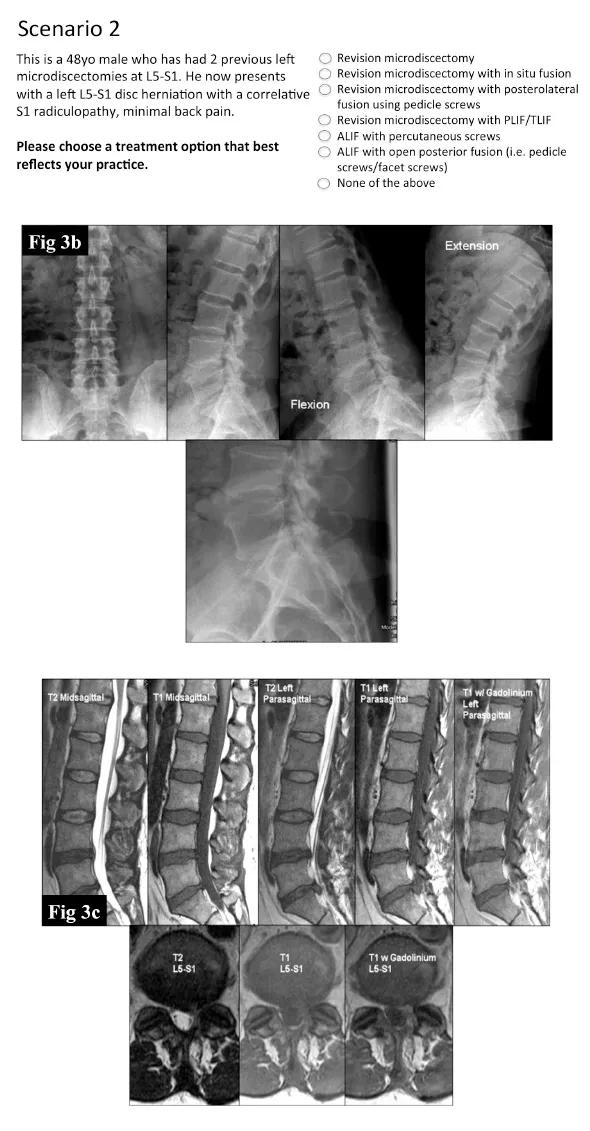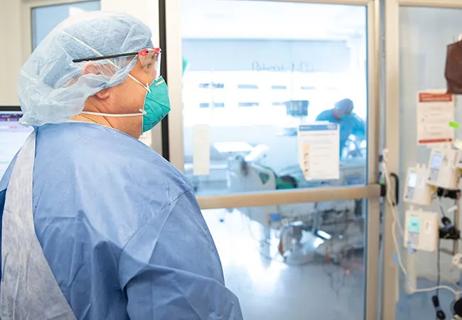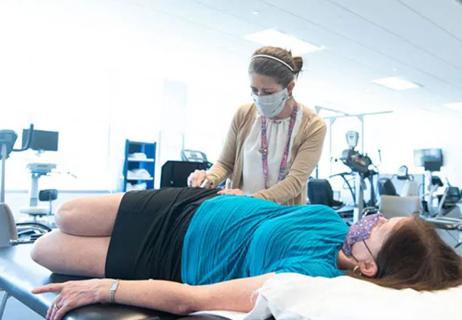Results have implications for cost, clinical outcomes

By Daniel Lubelski, BA, and Thomas E. Mroz, MD
Cleveland Clinic is a non-profit academic medical center. Advertising on our site helps support our mission. We do not endorse non-Cleveland Clinic products or services. Policy
The United States’ nearly 3,000 spine surgeons perform approximately 400,000 spine surgeries annually. As the number of surgical approaches, instruments and technologies they use has grown in recent decades, the associated costs have ballooned as well. In response, the federal government and other stakeholders have been working to reduce these costs and improve outcomes by moving toward a value-based healthcare system.
Within spine surgery, these efforts have translated into investigation of the comparative effectiveness and cost effectiveness of surgical options for a given pathology. Yet despite differences in financial costs and complication profiles among the various procedures, data supporting a relative advantage of one procedure over another are lacking.
We hypothesized that there were variations in treatment practices throughout the U.S. based on spine surgeons’ location, specialty, years of experience and/or practice setting. To explore this hypothesis, we recently surveyed U.S. spine surgeons and published our results.1
We created an online survey and sent it to 2,460 U.S. spine surgeons selected randomly from a database.
Recipients were asked to supply demographic data including:
The survey also presented case scenarios (each with multiple imaging studies), and surgeons were asked to select which of several proposed treatment options best reflected their practice:

Figure. The case vignette (with associated radiographs and MRIs) that was presented as Scenario 2 in the survey. Reprinted from reference 1 (Mroz et al) with permission from Elsevier.
Other case scenarios (including spondylolisthesis and back pain) were also included, and responses about practice patterns in those scenarios are being analyzed for description in future publications.
A total of 445 surgeons completed the survey, representing an 18 percent response rate.
Scenario 1. Responses to Scenario 1 (recurrent lumbar disk herniation following a single microdiskectomy) were fairly uniform, with the vast majority of surgeons selecting revision microdiskectomy and relatively few differences among surgeons.
Scenario 2. In contrast, responses to Scenario 2 (recurrent lumbar disk herniation following a second microdiskectomy) were considerably more varied. The most common responses to Scenario 2 were revision microdiskectomy and revision microdiskectomy with posterior/transforaminal lumbar interbody fusion (PLIF/TLIF).
Significant differences in responses to Scenario 2 were observed according to the following surgeon characteristics:
No significant differences in responses to Scenario 2 were observed based on respondents’ region, specialty, fellowship training or practice type.
To understand the level of variability among spine surgeons in selecting a treatment for revision lumbar disk herniation, we then calculated the probability of two randomly chosen surgeons from within specific cohorts (based on region, specialty, etc.) disagreeing on treatment choice.
Across all respondents, there was 69 percent disagreement in responses to Scenario 2 (two previous microdiskectomies) and 22 percent disagreement in responses to Scenario 1 (one previous microdiskectomy).
The degree of disagreement did not differ substantially by respondents’ geographic location, ranging from 68 percent (Midwest, Southeast and West) to 70 percent (Southwest) disagreement for Scenario 2 and from 16 percent (Southeast) to 26 percent (Northeast) disagreement for Scenario 1. Similar probabilities of disagreement were seen when surgeons were categorized by specialty, fellowship training and practice type.
In terms of practice duration, analysis generally showed that the longer respondents had been in practice, the more likely they were to disagree in their responses to each scenario.
When respondents were analyzed by number of surgeries per year, the probability of disagreement on Scenario 2 ranged from 62 percent (those performing 201 to 250 surgeries) to 76 percent (those performing < 50 surgeries). A similar trend was observed for Scenario 1, with a 60 percent probability of disagreement among those performing fewer than 50 surgeries compared with just an 18 to 23 percent probability of disagreement in each of the other surgical volume subgroups.
These findings are important, as they indicate that if two similar patients present to different surgeons with the same pathology of recurrent disk herniation after two prior microdiskectomies, they are likely to undergo different surgeries or surgical approaches. Because revision microdiskectomy and fusion procedures have different costs, complications and clinical outcomes, it is important to further investigate the reasons for these differences in practice and to understand the optimal surgical approach. Future investigations will need to define the optimal treatment algorithms for these pathologies.
Dr. Mroz is Director of the Spine Surgery Fellowship and a spine surgeon in Cleveland Clinic’s Center for Spine Health.
Mr. Lubelski is a senior medical student at Cleveland Clinic Lerner College of Medicine with a particular interest in neurosurgery and spine surgery.

Q&A with Brain Trauma Foundation guideline architect Gregory Hawryluk, MD, PhD

Q&A with newly arrived autoimmune neurology specialist Amy Kunchok, MD

A neurocritical care specialist shares what’s spurring growth of this new evaluation approach

Focused ultrasound offers a newer alternative to deep brain stimulation

Prehabilitation can help improve outcomes after spine surgery

Get ready for central vein sign and optical coherence tomography

How these new drugs fit into practice two years out from their first approvals

A conversation on the state of physiatry with the AAPM&R’s Vice President